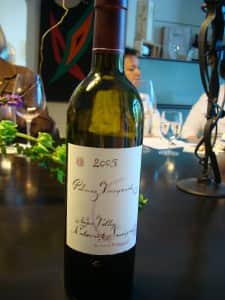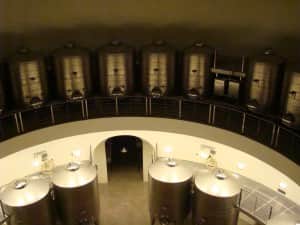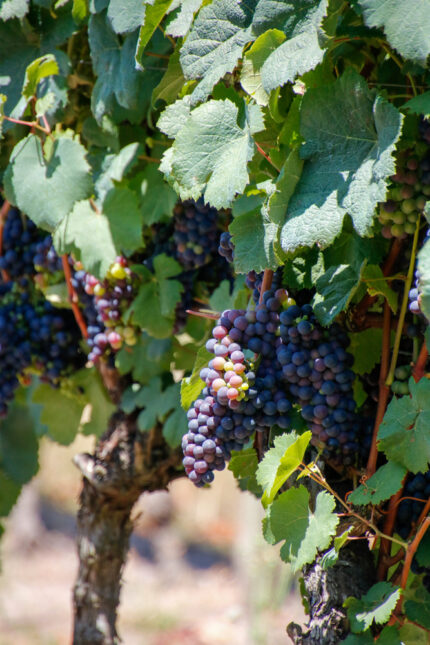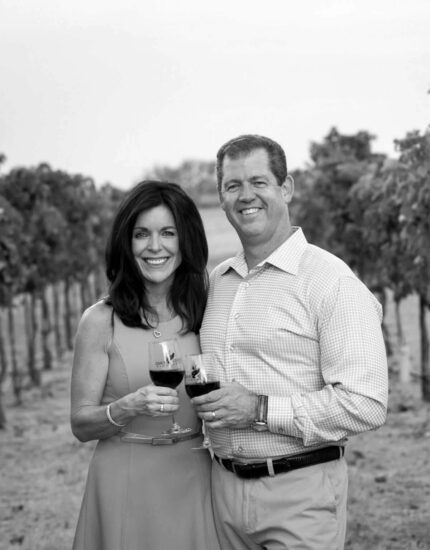
I haven’t written too much about the Women for Wine Sense conference mainly because my friends and I had so much fun exploring on our own. There were definitely a few highlights including the humbling blind pinot tasting featuring pinots from California, New Zealand, Oregon and France as well as the grand tasting where I tried rhubarb wine for the first, and last, time. We dined well at The Farm, Tra Vigne and Redd as evidenced by the extra six pounds that I carried back even though I ran for about an hour every day. It was fun to see my friend, Lindsay Woodward from Oregon-based Retour Wines, accept the Shining Star award and then to spend some time with her. Finally I got to meet some of my Twitter friends and social networking pioneers during a discussion on social networking (@davidhonig from Palate Press and @winedivergirl from Hahn Estate).
On Sunday, we were split up into groups and were hosted by a different winery. I choose to visit Palmaz Vineyards for a number of reasons – I had heard wonderful things about their wine; the technology behind the vineyard is fascinating for a tech geek at heart and I wanted to explore the stacked caves. These caves would equal the height of an 18-story building in any other city. We started our tour with a glass of the Palmaz Chardonnay ($45) and went to the top patio for a gorgeous, sweeping view of the property. I got notes of tropical fruit, buttered toast and a hint of vanilla in the wine. Here we learned how the home’s original owner, Henry Hagen, one of Napa’s first winemakers, produced award-winning wines in the 1800s at Cedar Knoll Vineyard and Winery, but Prohibition killed his business. The winery fell into disrepair and the vineyards were forgotten for almost 80 years until the Palmaz family saw the potential many years later.

We ventured into the caves and learned about gravity-flow winemaking. The wine is never pumped rather it is propelled through gravity from floor to floor through the entire winemaking process. We then returned to the table to sample the 05 and 06 Palmaz Cabernet Sauvignon, which were made by Tina Mitchell/Mia Kline. We began with the 06 ($100) and I tasted blackberry, spice and leather. It was well balanced, but needed some age. When I tried the 05 ($120) , I was sold. This one had lots of depth and a silky finish. Dark fruit, earthiness, spice made it a wine that will only improve with age, but is approachable today.
The Palmaz experience was truly the opportunity to explore a “Wineries of the World Wonder” and drink some damn good cabernet in the process.
Powered byTwitter



